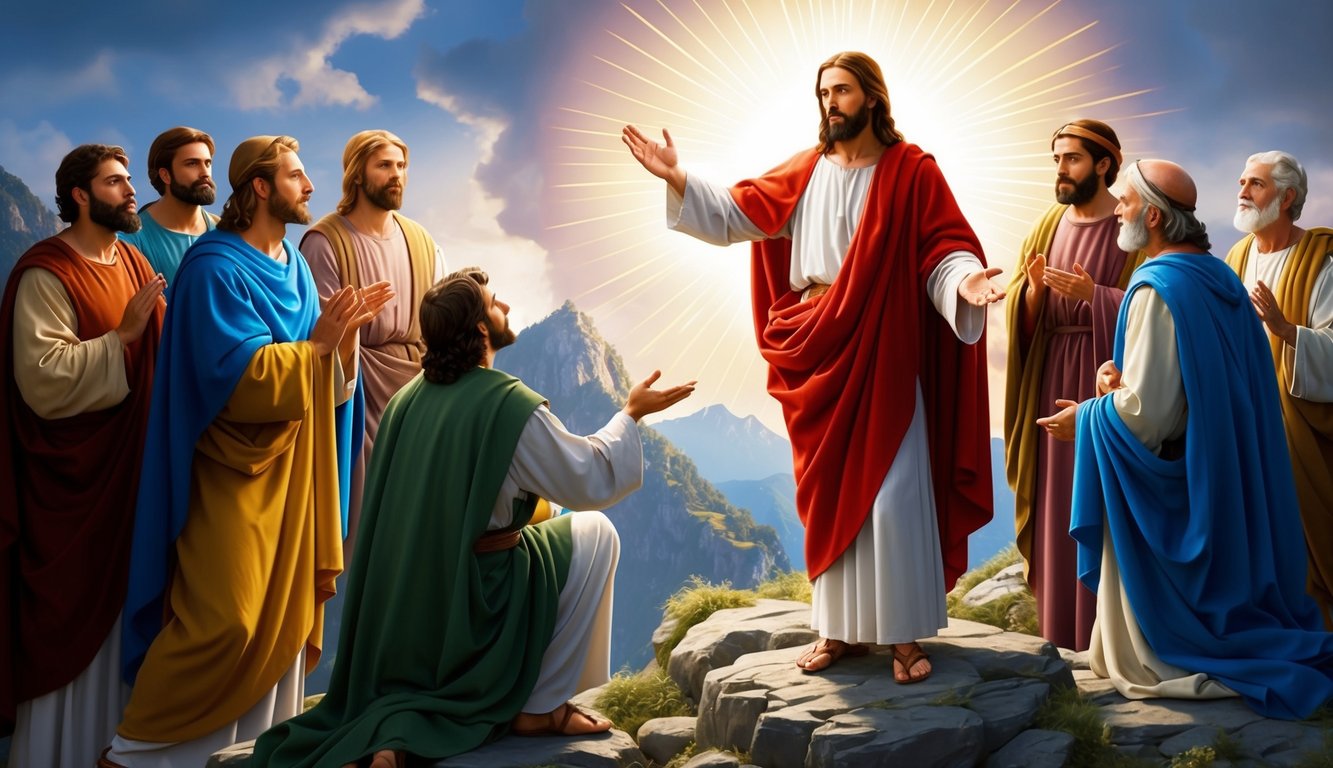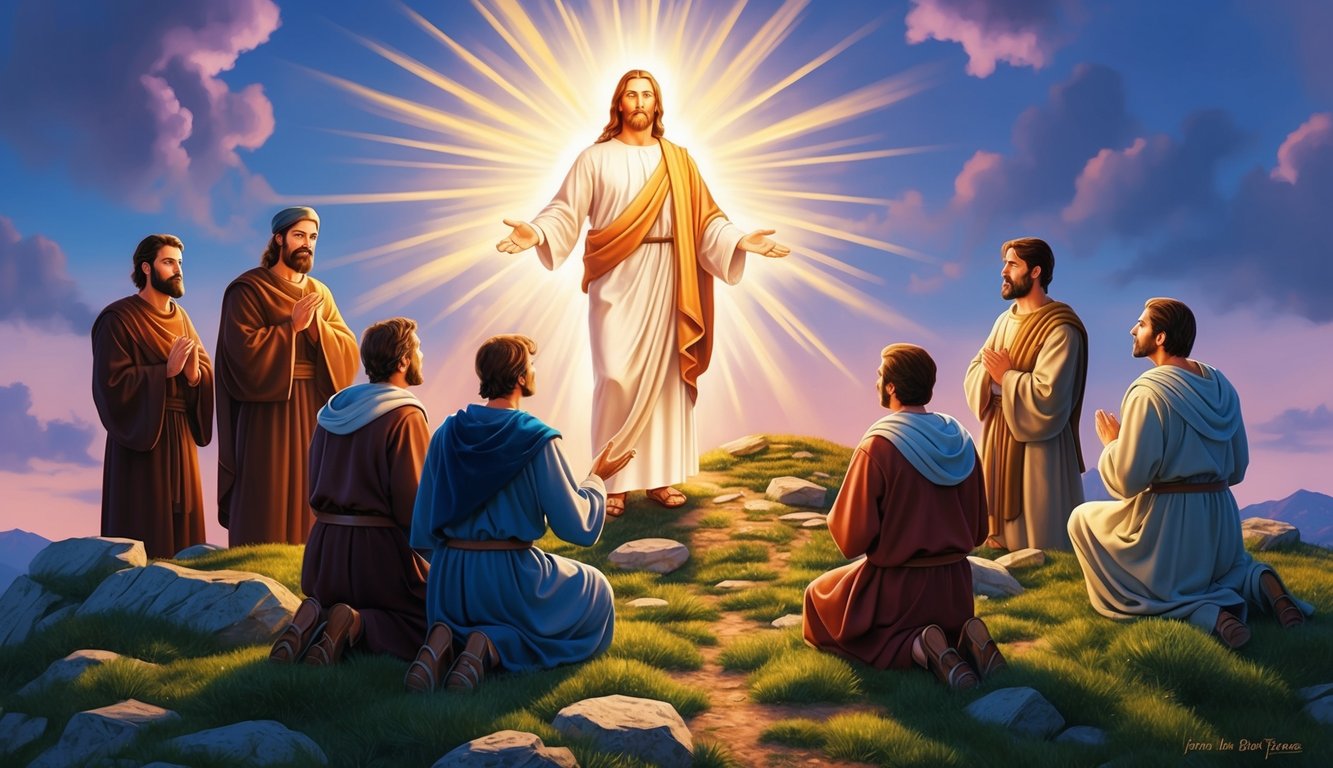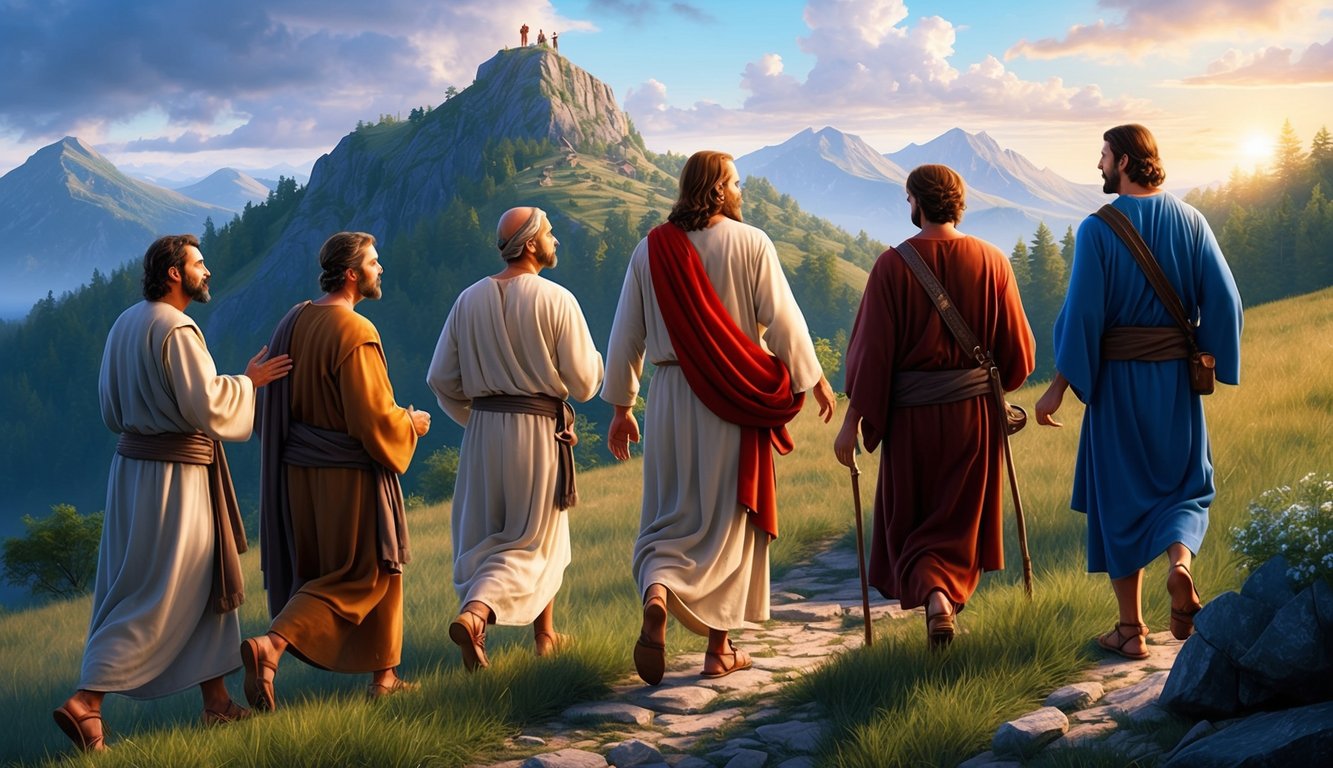Don’t Miss Out On This Unique Astrological Opportunity
Are you tired of spinning your wheels and getting nowhere? Simply put, you’re out of sync: you’re out of alignment with your astral configuration.
But: there’s a kind of map that can help you reclaim your alignment. Think of it as your own personal blueprint to success and happiness: a blueprint that will help you live your most amazing life.
Get started here.
In the Gospel of Luke, chapter 9 is packed with powerful events and teachings that can reshape how you see the role of faith and leadership in your life.
Jesus calls his twelve disciples, empowering them to heal the sick and preach, showing the importance of spreading the message beyond one’s self. This chapter illustrates how much responsibility comes with faith, as the disciples are sent out without possessions, relying solely on God and the generosity of those they meet.
Luke 9 also includes the miraculous feeding of the five thousand, demonstrating how faith in God can meet even the greatest needs.
These miracles and teachings reveal the depth of Jesus’ message and how it speaks to human needs both then and now.
Through Peter’s confession, you see an acknowledgment of Jesus as the Messiah, a pivotal moment that highlights a deeper understanding of who Jesus is.
Notably, the transfiguration and Jesus’ final teachings in this chapter invite you to consider the divine nature of Jesus, offering a glimpse of His glory.
This sets the stage for important lessons about faith, identity, and commitment that are essential for every believer.
When you explore Luke 9, you discover not just stories but lessons that challenge and inspire you.
Key Takeaways
- Disciples are empowered and sent with faith.
- Miracles reveal Jesus’ divine nature.
- Peter recognizes Jesus as the Messiah.
The Commissioning of the Twelve
In Luke 9, Jesus calls His twelve disciples and grants them special abilities.
He then sends them on a mission to spread His teachings and heal the sick.
Bestowed Power and Authority
You learn that the twelve disciples are given power and authority by Jesus.
This isn’t just an ordinary task; they have a unique role.
They receive the ability to cast out demons and heal diseases.
This remarkable gift shows the trust Jesus places in them as they carry His message.
The power signifies the start of a significant journey.
The disciples understand that their mission is not about them but about serving a greater purpose.
This authority helps them as they go from one village to another, facing various challenges.
Sent Out to Proclaim and Heal
Jesus sends you, as one of the twelve, to share the Kingdom of God and heal those in need.
You are instructed to travel light—no extra bread, money, bag, or clothes.
The journey relies on faith and the hospitality provided by others.
When you enter a house, you stay there until it’s time to move on.
If any village does not welcome your message, you testify against them as you leave.
The mission focuses on spreading Jesus’ teachings and showing compassion, emphasizing the importance of faith and reliance on God.
Feeding the Five Thousand
During one of Jesus’ notable miracles, He managed to feed a large crowd with scarce resources.
This miracle shows Jesus’ power and compassion.
With just five loaves and two fish, an audience of five thousand people witnessed a profound event.
The disciples played a role in both the event and its telling.
The Miracle of Multiplication
Imagine being one of Jesus’ apostles during this miracle.
You’d see Him take just five loaves and two fish.
That’s not much for a crowd of five thousand! Yet, Jesus blessed this small meal after looking up to heaven.
The food multiplied and satisfied everyone present.
The disciples were instructed to have the people sit in groups.
They then distributed the loaves and fish to the groups.
You can picture the amazement of the people as the food just kept on coming.
Each person received enough to eat, with leftovers filling twelve baskets.
This miracle didn’t just provide food for the hungry but also demonstrated the abundance and generosity of Jesus’ message.
You’d think the apostles would have been awestruck witnessing such an event, which revealed Jesus’ ability to meet needs in unanticipated ways.
Peter’s Confession of Christ

In Luke 9, Peter makes a significant declaration about Jesus.
This moment highlights what it means to truly recognize Jesus and addresses the challenges that come with being his disciple.
The Christ of God
While Jesus was praying with his disciples, he asked them about people’s opinions regarding his identity.
When Jesus turned the question to his closest followers, Peter boldly confessed, “The Christ of God.” This was a pivotal moment, as it acknowledged Jesus not just as a prophet, but as the Messiah — the anointed one promised in Jewish tradition.
Peter’s statement showed a deep faith and insight into who Jesus truly was and what he meant for the world.
The Cost of Discipleship
Following Peter’s confession, Jesus shared the demands of true discipleship. Jesus spoke of the requirements for anyone wanting to be his follower: they must deny themselves and take up their cross daily.
This means being ready to face rejection and even risk one’s life for his sake.
Jesus explained that those who try to save their life will lose it, but those who lose their life for his sake will find it.
He also warned about being ashamed of him, reminding everyone of the Son of Man’s glory when accompanied by the Father and holy angels.
These teachings emphasized that following Jesus comes with real challenges, but it leads to spiritual life.
The Transfiguration and Final Teachings

In Luke 9, key moments in Jesus’ journey show his divine glory and teachings on humility and discipleship.
These events reveal crucial aspects of his mission and the mindset needed to follow him.
The Mountaintop Experience
You are taken to a mountaintop where Jesus’ face shines with glory.
This is a pivotal moment known as the Transfiguration.
Jesus prays on the mountain, and suddenly his appearance changes.
His clothes become dazzling white.
Moses and Elijah appear next to him, talking about his departure to Jerusalem.
This heavenly meeting shows Jesus’ unique role in God’s plan.
A cloud envelops everyone, and God’s voice declares Jesus as His chosen Son.
With James, John, and Peter witnessing this, it’s a clear message about who Jesus truly is.
Healing and Embracing the Least
After witnessing the Transfiguration, you learn about Jesus’ emphasis on caring for the least.
When a boy possessed by a demon is brought to him, Jesus heals with compassion.
He shows that embracing and serving a child means embracing God Himself.
You are reminded that in God’s eyes, the least among us are the greatest.
Jesus’ teachings here are a powerful call to see the value in humility and service.
His actions encourage you to treat everyone with love and respect, recognizing the divine potential in each person.
The Journey Towards Jerusalem
As Jesus prepares to go to Jerusalem, his path is filled with lessons.
He sends messengers ahead to a Samaritan village, but they are not welcomed.
James and John suggest calling down fire in response, but Jesus rebukes them.
He teaches about the cost of following him: foxes have dens and birds have nests, but he has nowhere to lay his head.
You hear the call to follow without delay or hesitation.
People who look back and delay by insisting on completing tasks like burying the dead aren’t fit for the kingdom of heaven.
Jesus’ journey shows the deep commitment needed to be his disciple.
Frequently Asked Questions

In Luke chapter 9, you’ll find teachings and events that highlight the power of faith, the importance of self-denial, and the cost of following Jesus.
These themes are presented through miracles, parables, and direct instructions from Jesus.
What is the main message of Luke chapter 9?
The chapter focuses on the mission of the disciples, miracles like the feeding of the five thousand, and Peter’s confession of Christ.
It emphasizes living with faith and understanding Jesus’s role as the Messiah.
How do different Bible translations like NKJV, KJV, ESV, NRSV, and NLT present Luke 9?
Each translation may vary slightly in language.
The NKJV and KJV use more traditional language, while ESV and NRSV offer a modern phrasing.
The NLT presents ideas in a simplified and approachable way.
Can you provide insights from biblical commentaries on Luke 9?
Commentaries often highlight Jesus empowering the disciples to spread His message and perform miracles.
They discuss themes like faith, discipleship, and acknowledging Jesus as the Christ, shedding light on deeper meanings.
In Luke 9:23, what does ‘taking up your cross daily’ signify for Christians?
This phrase means being willing to face struggles and sacrifices for your faith.
It suggests a commitment to following Jesus’s teachings every day, despite challenges or opposition.
How is the cost of discipleship described in the context of Luke 9?
Jesus explains that being His disciple requires putting Him above all else.
It might involve leaving behind personal desires or comforts.
He calls for a willingness to endure sacrifices for spiritual growth.
What theological significance is found in Luke 9:27?
This verse hints at the coming Kingdom of God and the transformation seen by some disciples.
It signifies experiencing God’s power and glory.
It also foreshadows future events like Jesus’s resurrection and His eternal reign.
This revelation strengthens the faith of the disciples, preparing them for the trials ahead.
It serves as a reminder that God’s promises will be fulfilled, giving hope to believers.
Additionally, understanding passages like john 146 3 meaning helps illuminate Jesus’s assurance of preparing a place for His followers, reinforcing trust in His eternal plan.



